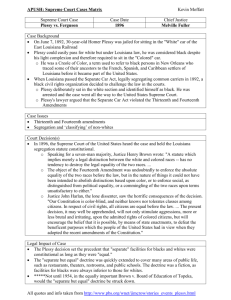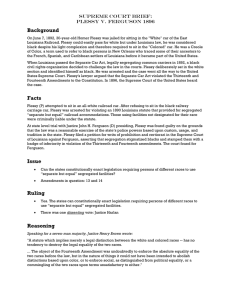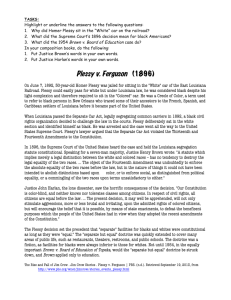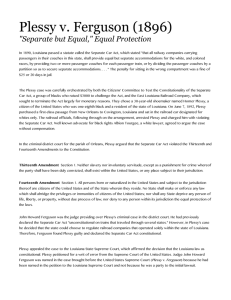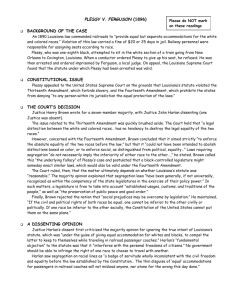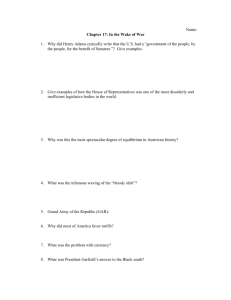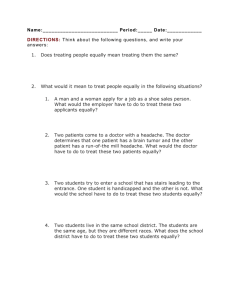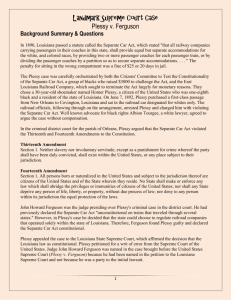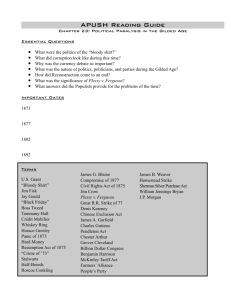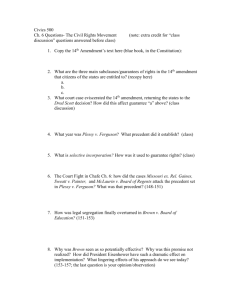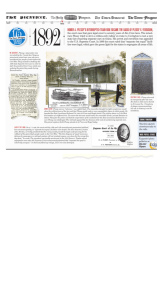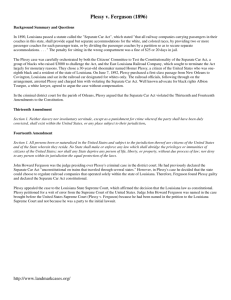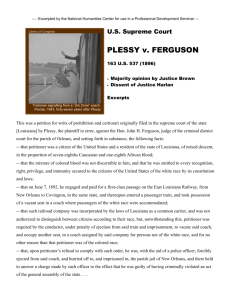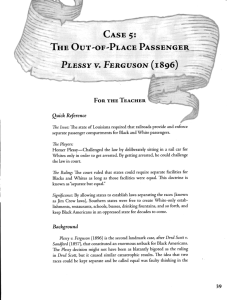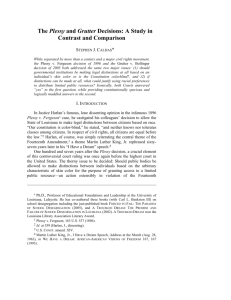Plessy v. Ferguson - Binghamton City Schools
advertisement
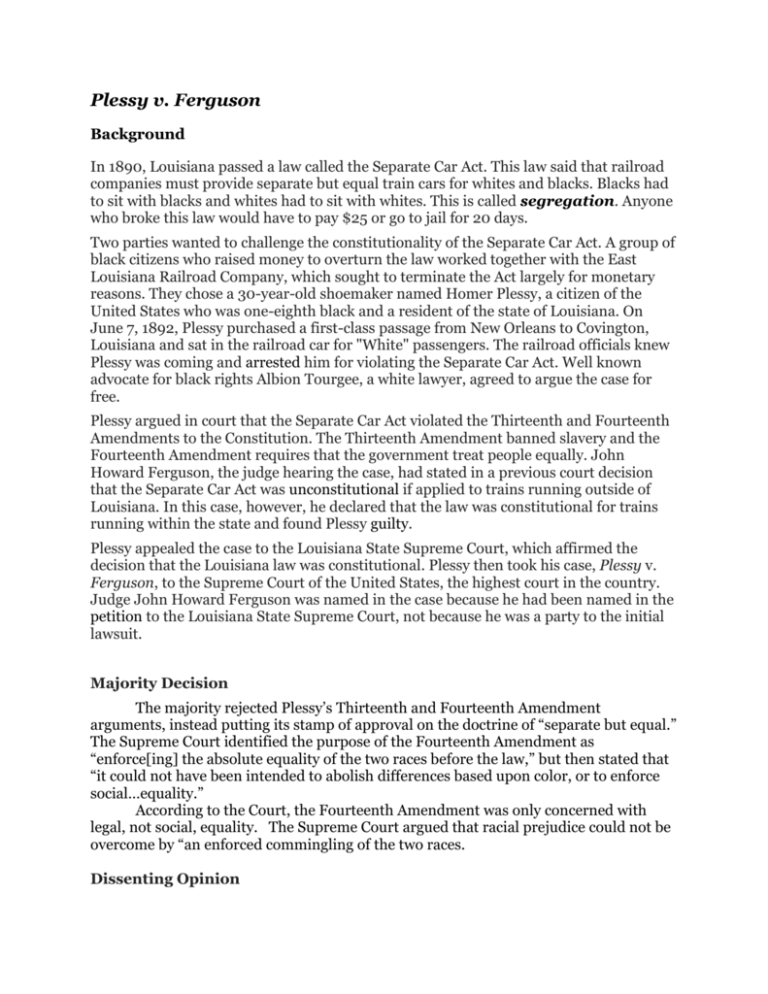
Plessy v. Ferguson Background In 1890, Louisiana passed a law called the Separate Car Act. This law said that railroad companies must provide separate but equal train cars for whites and blacks. Blacks had to sit with blacks and whites had to sit with whites. This is called segregation. Anyone who broke this law would have to pay $25 or go to jail for 20 days. Two parties wanted to challenge the constitutionality of the Separate Car Act. A group of black citizens who raised money to overturn the law worked together with the East Louisiana Railroad Company, which sought to terminate the Act largely for monetary reasons. They chose a 30-year-old shoemaker named Homer Plessy, a citizen of the United States who was one-eighth black and a resident of the state of Louisiana. On June 7, 1892, Plessy purchased a first-class passage from New Orleans to Covington, Louisiana and sat in the railroad car for "White" passengers. The railroad officials knew Plessy was coming and arrested him for violating the Separate Car Act. Well known advocate for black rights Albion Tourgee, a white lawyer, agreed to argue the case for free. Plessy argued in court that the Separate Car Act violated the Thirteenth and Fourteenth Amendments to the Constitution. The Thirteenth Amendment banned slavery and the Fourteenth Amendment requires that the government treat people equally. John Howard Ferguson, the judge hearing the case, had stated in a previous court decision that the Separate Car Act was unconstitutional if applied to trains running outside of Louisiana. In this case, however, he declared that the law was constitutional for trains running within the state and found Plessy guilty. Plessy appealed the case to the Louisiana State Supreme Court, which affirmed the decision that the Louisiana law was constitutional. Plessy then took his case, Plessy v. Ferguson, to the Supreme Court of the United States, the highest court in the country. Judge John Howard Ferguson was named in the case because he had been named in the petition to the Louisiana State Supreme Court, not because he was a party to the initial lawsuit. Majority Decision The majority rejected Plessy’s Thirteenth and Fourteenth Amendment arguments, instead putting its stamp of approval on the doctrine of “separate but equal.” The Supreme Court identified the purpose of the Fourteenth Amendment as “enforce[ing] the absolute equality of the two races before the law,” but then stated that “it could not have been intended to abolish differences based upon color, or to enforce social…equality.” According to the Court, the Fourteenth Amendment was only concerned with legal, not social, equality. The Supreme Court argued that racial prejudice could not be overcome by “an enforced commingling of the two races. Dissenting Opinion Justice John Marshall Harlan dissented from the majority opinion. In an opinion that later became pivotal in the Brown v. Board of Education cases (1954), he argued that segregationist legislation, like the Louisiana law in this case, was based on the assumption that “colored citizens are so inferior and degraded that they cannot be allowed to sit in public coaches occupied by white citizens.” These laws promoted and perpetuated the belief that African Americans were inferior to whites, according to Justice Harlan. They must be struck down, he argued, because the government could not “permit the seeds of race hate to be planted under the sanction of law.” Justice Harlan believed that the constitution must be “color-blind,” and that it could allow “no superior, dominant ruling class of citizens.” Because segregation had the effect of creating such classes, he judged, it was unconstitutional. QUESTIONS TO CONSIDER 1. What law did Homer Plessy violate? How did Plessy violate this law? 2. What rights do the Thirteenth and Fourteenth Amendments provide? Why did Plessy believe that the Separate Car Act violated these rights? 3. Judge Ferguson decided that the state could make laws for railroad companies that traveled within the state but not for those that traveled between states. On what basis can Judge Ferguson treat these two situations differently? 4. What claim did Plessy make to the Louisiana State Supreme Court? How did his claim reflect on his argument that his Fourteenth Amendment rights were violated? 5. Do you think it is possible for blacks and whites to be separate and equal? Why or why not? If so, describe a situation where people can be separate, but equal. 6. What was the dissenting opinion? 7. What was the majority decision and why was it significant?


